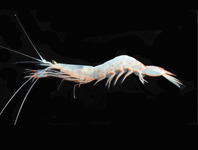Abstract
Ludwig Glauert (1952, p. 168) established the name Amphibolurus barbatus microlepidotus (= Pogona microlepidota) for a new agamid species (family Agamidae) from the type locality of “Drysdale River Mission, North Kimberley”, Western Australia and listed two specimens of the Western Australian Museum (WAM) collected by “Rev. Father [Raymundus] Salinas” in July 1922 as “types”. The two registrations forming the type series presented by Glauert were WAM R591 and WAM R592, which in accordance with Article 72.1.1. of the International Code for Zoological Nomenclature (the Code; International Commission on Zoological Nomenclature 1999) are considered syntypes. The two registrations presented by Glauert in the original publication (WAM R591–592) are in error, both registrations are associated with specimens of other species not matching the description or collection data presented by Glauert in the original description of A. b. microlepidotus. The specimen associated with WAM R591 is a Pseudonaja affinis Günther, 1872 (Serpentes: Elapidae), collected by M. Sweeting from the suburb of Leederville in Perth, Western Australia and WAM R592 a specimen of Neelaps calonotus (Duméril, Bibron, & Duméril, 1854) (Serpentes: Elapidae) collected by C. Thomas from the Perth suburb of West Guildford (now Bassendean), Western Australia (Fig. 1). The P. affinis specimen (WAM R591) is purportedly a whole specimen stored in a 75% ethanol solution; however, extensive searches failed to locate the specimen in the WAM collection and it is presumed lost or disposed of. In the early half of the 20th century, large and easily identifiable specimens were sometimes disposed following identification, registration and collection of morphological data due to their preservation and storage difficulty (see Smith 1981). The N. calonotus specimen (WAM R592) is now an alizarin-stained body in a glycol solution with skin stored separately in 75% ethanol (Fig. 1). The erroneous registration numbers provided by Glauert technically placed the name A. b. microlepidotus into synonymy with either N. calonotus or P. affinis depending on lectotype selection.
References
Anonymous (1961) Type specimens in the Western Australian Museum (Part 2). Western Australian Museum Annual Report, 1960–61, 35–39.
Badham, J.A. (1976) The Amphibolurus barbatus species-group (Lacertilia: Agamidae). Australian Journal of Zoology, 24 (3), 423–443.
https://doi.org/10.1071/ZO9760423Cogger, H.G., Cameron, E.E. & Cogger, H.M. (1983) Zoological Catalogue of Australia. Vol. 1. Amphibia and Reptilia. Australian Government Publishing Service, Canberra, vi + 313 pp.
Cogger, H.G. (1992) Reptiles and Amphibians of Australia. Fifth Edition. Reed Books, Chatswood, 775 pp.
Doughty, P., Ellis, R.J. & Oliver, P.M. (2016) Many things come in small packages: revision of the clawless geckos (Crenadactylus: Diplodactylidae) of Australia. Zootaxa, 4168 (2), 239–278.
https://doi.org/10.11646/zootaxa.4168.2.2Duméril, A.M.C., Bibron, G. & Duméril, A.H.A. (1854) Erpétologie Générale ou Histoire Naturelle Complète des Reptiles. Tome septième. Première Partie, Comprenant l’Histoire des Serpents Non Venimeux. Librairie Encyclopédique de Roret, Paris, xvi + 780 pp., 12 pls.
Ellis, R.J. (2015) Corrections of the type specimens of Liasis olivaceus barroni Smith, 1981 (Serpentes: Pythonidae). Records of the Western Australian Museum, 30 (1), 61–63.
https://doi.org/10.18195/issn.0312-3162.30(1).2015.061-063Glauert, L. (1952) Herpetological miscellanea. II. Some new Western Australian lizards. Western Australian Naturalist, 3 (7), 168–170.
Günther, A. (1872) Seventh acount of new species of snakes in the collection of the British Museum. The Annals and Magazine of Natural History, Series 4, 9, 13–37.
https://doi.org/10.1080/002229372011951771International Commission on Zoological Nomenclature (1999) International Code of Zoological Nomenclature. Fourth Edition. The International Trust for Zoological Nomenclature, London, 336 pp.
International Commission on Zoological Nomenclature (2004) Opinion 2090 (Case 3196): Ctenotus decaneurus yampiensis Storr, 1975 (currently C. yampiensis; Reptilia, Sauria): neotype designated. Bulletin of Zoological Nomenclature, 61 (3), 206–207.
Smith, L.A. (1981) A revision of the python genera Aspidites and Python (Serpentes: Boidae) in Western Australia. Records of the Western Australian Museum, 9 (2), 211–226.
Smith, L.A. (1981) A revision of the Liasis olivaceus species-group (Serpentes: Boidae) in Western Australia. Records of the Western Australian Museum, 9 (2), 227–233.
Smith, L.A. (2002) Case 3196: Ctenotus decaneurus yampiensis Storr, 1975 (currently C. yampiensis; Reptilia, Sauria): proposed designation of a neotype. Bulletin of Zoological Nomenclature, 59 (4), 273–274.
Storr, G.M. (1975) The genus Ctenotus (Lacertilia, Scincidae) in the Kimberley and North-west divisions of Western Australia. Records of the Western Australian Museum, 3 (3), 209–243.
Storr, G.M. (1978) Seven new gekkonid lizards from Western Australia. Records of the Western Australian Museum, 8 (3), 337–352.
Storr, G.M. (1982) Revision of the Bearded Dragons (Lacertilia: Agamidae) of Western Australia with notes on the dismemberment of the genus Amphibolurus. Records of the Western Australian Museum, 10 (2), 199–214.
Wells, R.W. & Wellington, C.R. (1985) A classification of the Amphibia and Reptilia of Australia. Australian Journal of Herpetology Supplementary Series, 1, 1–61.
Witten, G.J. (1994) Taxonomy of Pogona (Reptilia: Lacertilia: Agamidae). Memoirs of the Queensland Museum, 37 (1), 329–343.

